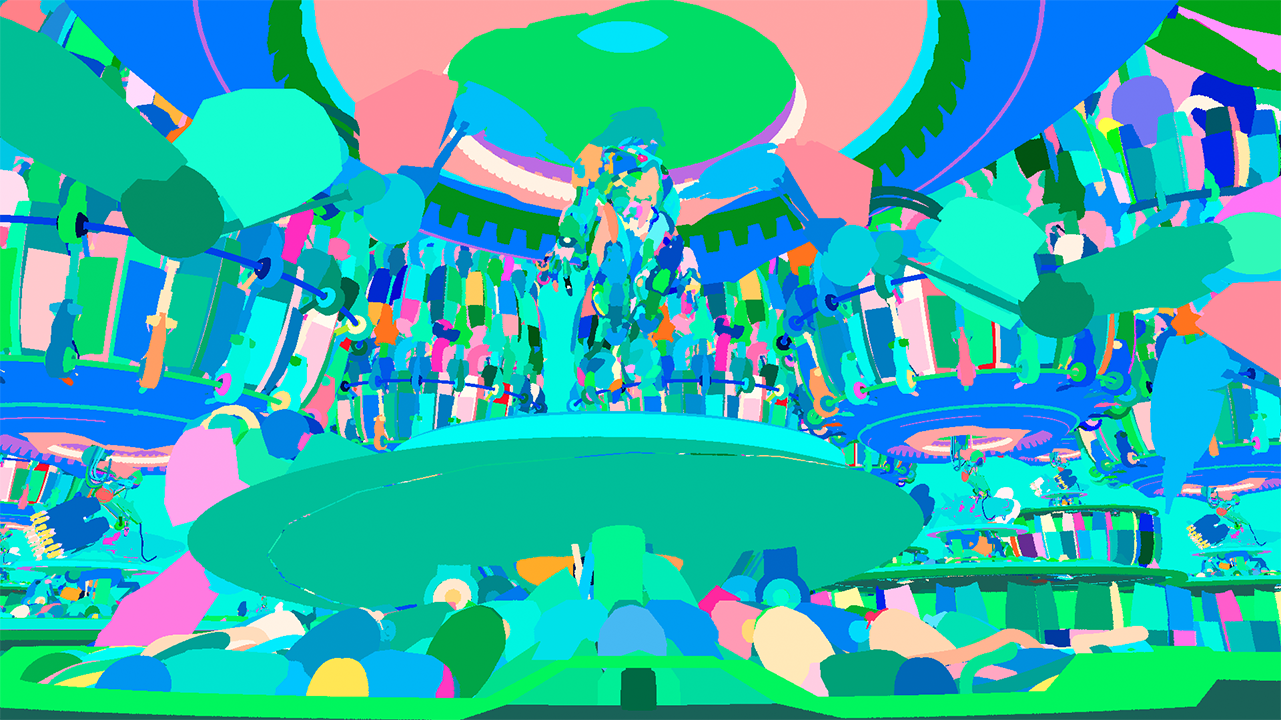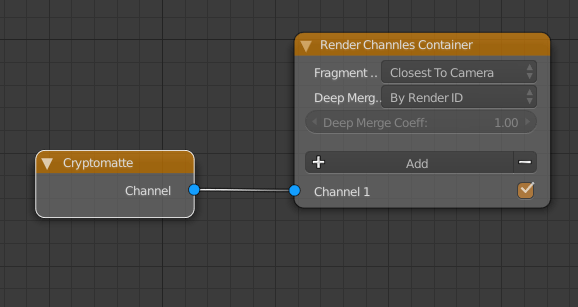This page provides information on the Cryptomatte Node in V-Ray for Blender.
Overview
Cryptomatte is a method developed by Psyop for efficiently encoding accurate mattes. Typically, it uses three to five render elements (which are automatically generated) with multichannel OpenEXR files, which removes the hassle of creating dozens, or hundreds, of Multi Mattes. Using the Cryptomatte plugin for NUKE or Fusion, mattes can be extracted through directly picking objects or entering object names.
Compared to the MultiMatte Render Channel, Cryptomatte offers the following:
- Does not require a setup with object IDs, etc.
- Only requires a fixed number of additional render elements, typically four.
Currently, the Cryptomatte Render Element requires the Adaptive DMC Image Sampler type and outputs set to multichannel OpenEXR files.
UI Path
||Node Editor|| > Add > Render Channels > Cryptomatte
Parameters
ID Type – Specifies how the ID mattes are determined.
Node Name – Creates mattes by node names.
Material Name – Creates mattes based on the materials in the scene.
Node Name Hierarchy – Creates mattes by node names and takes the node hierarchy into account for linked or grouped objects.
Name – Assign specific name to the render element.
EXR Metadata – Determines how and whether metadata is appended to the EXR extra attributes.
Metadata & Manifest – Write required metadata and manifest.
Required Metadata – Write required metadata only.
None – The plugin does not append any metadata.
References




